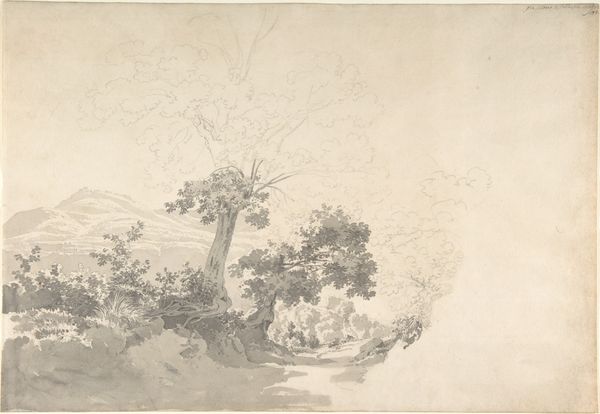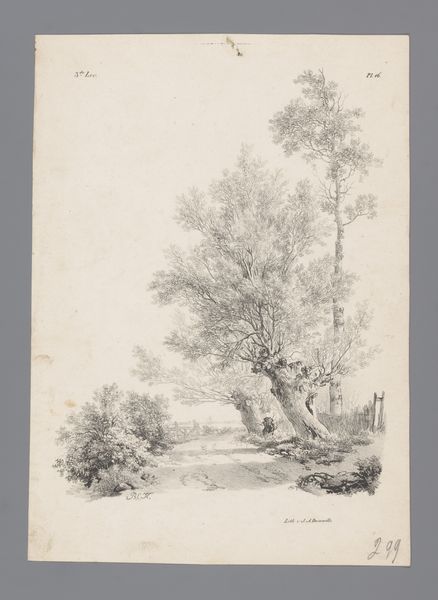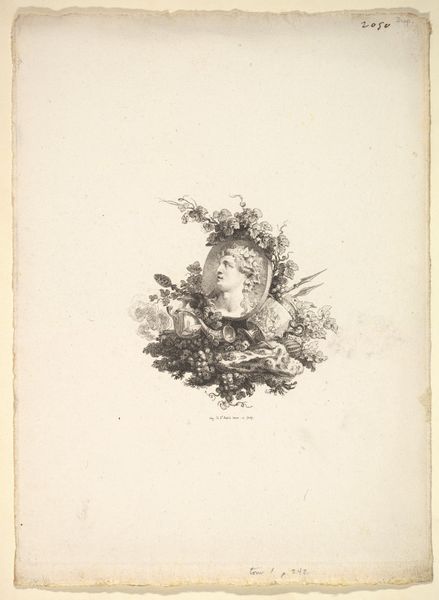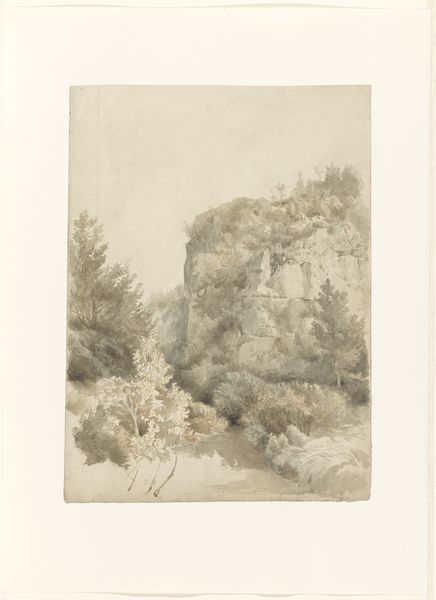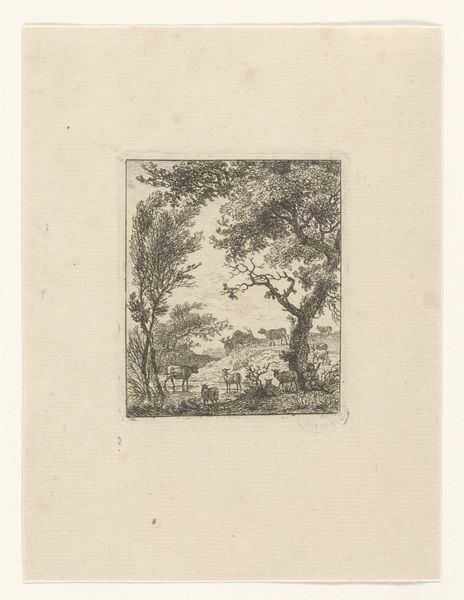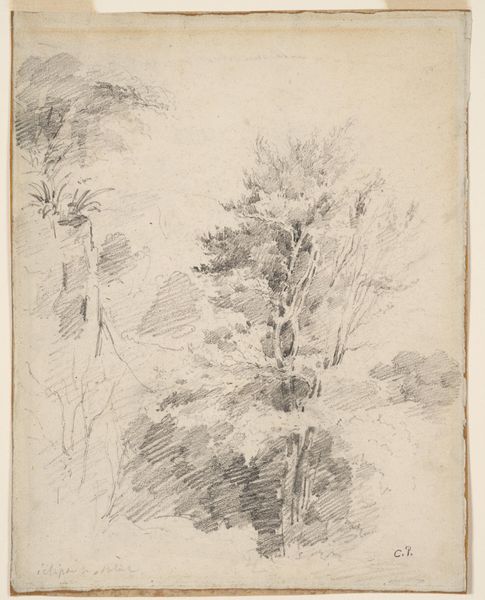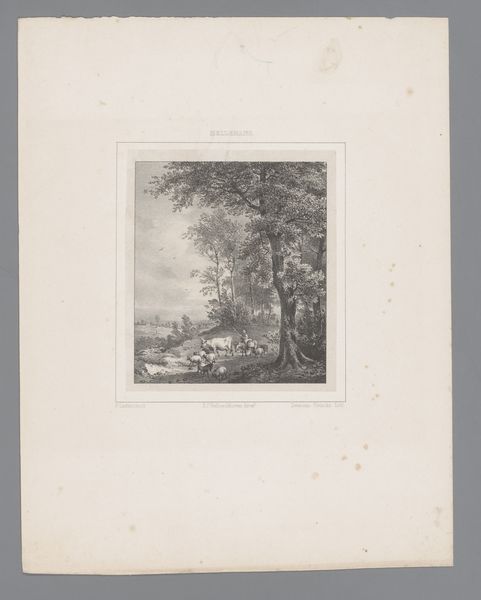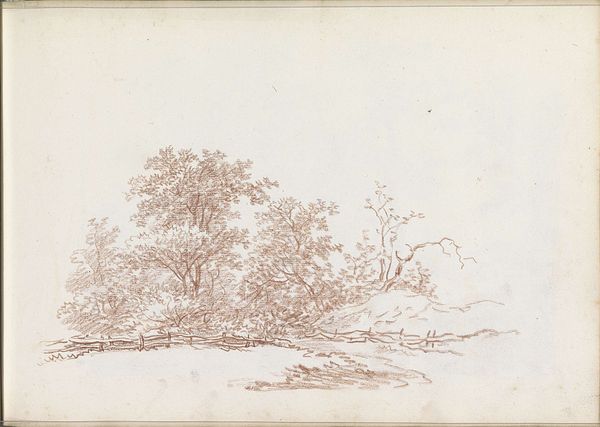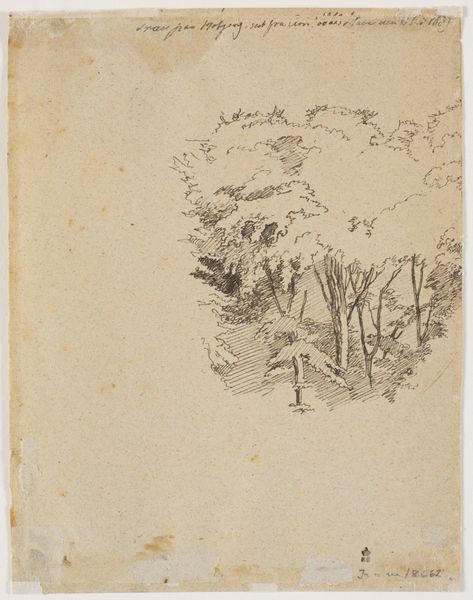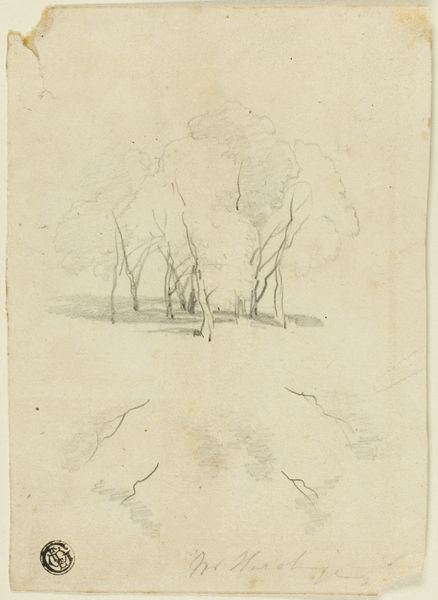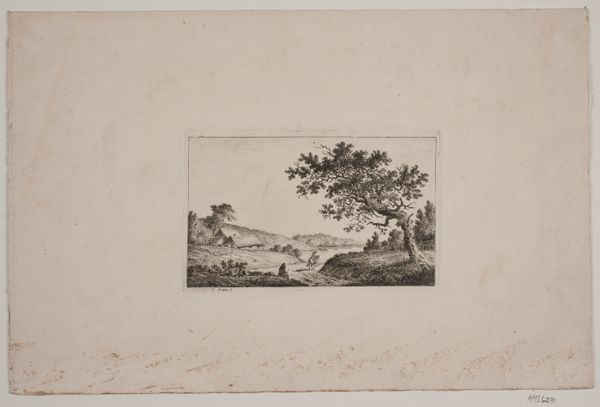
Vignette with Coin on a Cloud with Roses to the left and Doves Below and to the Right, Tome I, Page 148, from Description des Principales Pierres gravées du Cabinet de S.A.S. Monseigneur le Duc d'Orléans Premier Prince du sang. A Paris chez M. l'abbé de la Chau au Palais-Royal M. l'abbé Le Blond au collége Mazarin Et chez Pissot, libraire, quai des Augustins 1778 - 1780
Dimensions: Sheet: 11 5/8 × 8 11/16 in. (29.5 × 22 cm) Plate: 11 3/8 × 8 3/8 in. (28.9 × 21.2 cm)
Copyright: Public Domain
This is an engraving by Augustin de Saint-Aubin, made in Paris sometime around the late 18th century. It's a delicate vignette, featuring symbols of wealth and beauty: a coin on a cloud, framed by roses, with doves fluttering nearby. During this time, France was a society defined by rigid class structures and extreme disparities in wealth. The aristocracy enjoyed lives of luxury while the majority of the population struggled. Saint-Aubin, as an engraver, occupied a unique position, creating images that circulated among different social classes. His work reflected the values and aesthetics of the elite, but was also accessible to a wider audience through print culture. This image isn't just about beauty, but also about the power and privilege associated with it. The coin, the roses, the doves – they all speak to a world of refined taste and material abundance, a world that was increasingly under scrutiny as social tensions grew. Saint-Aubin’s vignette captures the aspirations and anxieties of a society on the brink of revolution. It reminds us to consider the complex relationship between art, wealth, and social identity.
Comments
No comments
Be the first to comment and join the conversation on the ultimate creative platform.

